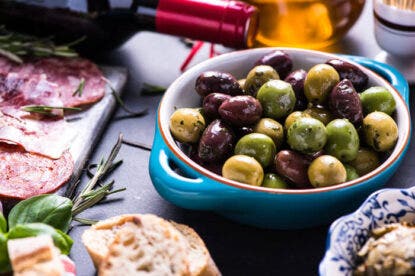California’s wine history will never match the Old World’s multi-millennia head start. But that doesn’t mean the Golden State doesn’t have a deep, rich past. In fact, its commercial winemaking legacy dates back much further than most consumers know—a full century before the rise of Napa Valley in the 1960s.
In the mid-19th century, as the gold-seeking 49ers returned to the mountainous coast from their mining exploits, vines were being planted all over the state, particularly around the emerging pueblos of Los Angeles and San Jose, where growing populations needed agricultural support to survive.
Those first plantings, usually spearheaded by French and Italian descendants, quickly grew into a bustling industry focused mainly on quantity As the state’s population exploded, however, property owners were able to reap much more lucrative returns when they planted suburban tract homes on top of the old vineyards.
I know this reality well, having grown up near the old Mirassou property in East San Jose where my family settled as shepherds in the 1850s. (Indeed, Kettmann Road runs into Aborn Road, which dissects the old vineyard property.)
As a kid of the 1980s, I rode my bike on dirt roads past the gnarled vines. Today, cars zoom in and out of the old vineyard, which is now a shopping center and townhome subdivision. The winery structure itself is preserved as a landmark of sorts.
Thankfully, not everything was ripped out. Some of these nearly forgotten vineyards endure, offering distinctive grapes from often oddball varieties with more than 100 years of vine age.
At least for those of us who appreciate the links to the past that old vines offer, there’s a growing respect for these survivors. And in an age where localism and the concept of terroir are trending, I believe the market will be increasingly receptive to exploring these bottles of history.
Check out the latest ratings and reviews from California Contributing Editor Matt Kettmann >>>
This movement is very strong in the northern reaches of the Central Coast, particularly in southern Santa Clara County and the adjacent Santa Cruz Mountains.
The Uvas Creek region between Morgan Hill and Gilroy, for instance, is experiencing resurgence with a number of wineries open for tasting along Watsonville Road, where Mission grapes were initially planted by Spanish friars long ago.
This is a great place to find tastes of old vine Charbono and Carignan, although there’s quite a variance in quality. I’ve recently enjoyed bottlings of these grapes from Aver Family, Fortino and, down the road on Hecker Pass, Sarah’s Vineyard.
Perhaps most promising, however, is that the next generation of winemakers is embracing these old vines. Such is the case with Birichino, a brand started in 2008 by Alex Krause and John Locke, who both worked for Randall Grahm at Bonny Doon Vineyard.
Using grapes mostly from 19th- and early 20th-century vineyards, they produce incredibly intriguing wines, often rather light and elegant, which goes against the usual belief that old vines equal rich fruit bombs. I’ve liked the Zinfandel from St. Georges Vineyard, which was planted by a bootlegger in 1922, and thought that the Grenache from the Besson Vineyard, planted in 1910, was quite intriguing.
“I have found that vineyards often behave much like people,” says Krause. “In their youth, they tend to have an abundance of energy that sometimes is not very well focused… With time, these indiscretions tend to get worked out, and we find that the vineyards that have survived 93 or 105 or 129 years also bear witness to the fact that several generations of winemakers have considered that the suitability of the particular variety to the site was worth keeping around.”
While he thinks only the “lunatic fringe” of winemakers are tuned into these vineyards, Krause and Locke see themselves as caretakers for the future, too.
“I consider us very lucky to be able to work with these old sites, and also consider it an obligation to ensure that they remain viable and valued for the next generations of winemakers that will follow,” says Krause.
So snag a bottle of Birichino or any other old-vine California wine, and sip some Golden State history with me.
Santa Clara Valley is only one spot where old vines thrive. What’s your favorite old vine wine, and why?Tweet me back at @indyemkae >>>
Editor Speak is WineMag.com’s weekly sounding board on the world of wine and beyond. Follow #EditorSpeak on Twitter for the latest columns from @WineEnthusiast and our editors >>>
Published: August 25, 2015














